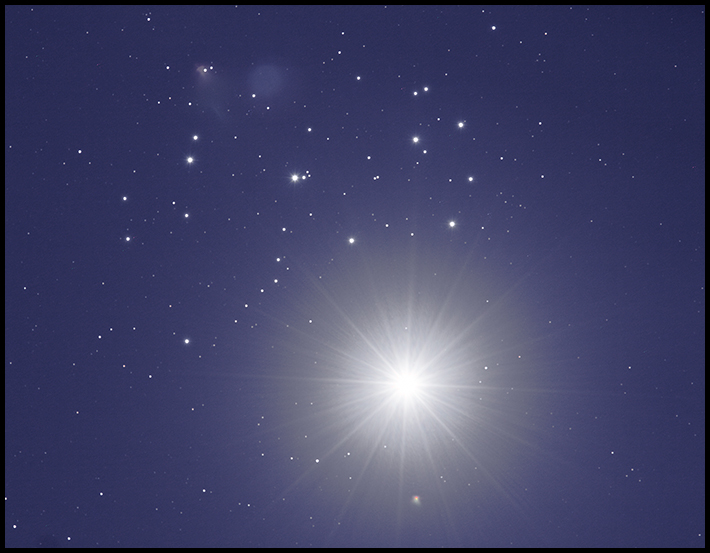3/10/2012. I've adopted a Bahtinov mask to speed up the focusing process. Jury is still out on just how close to perfect it can get the initial position -- poor seeing, haze, the usual excuses. I'll do a more or less fair and rigorous workout soon. Let's say it's promising: the recommended position is remarkably unambiguous. But does it correspond to minimum FWHM? And if not, what's that say?
After the 14th Caldwell County Traditional Musicians Showcase, we got home at about 3AM. I'd left the telescope almost ready to go in order to try a photo of Comet Garradd in the moonlight. Started it up and dialed in the comet on its predicted track but about six hours ahead of its (surely out of date) ephemeris position and then made a series of ~80, one minute unguided exposures. Gaps in this image are from interludes when I had Maxim taking color data (which proved useless this time around):

Comet Garradd
AT10RC @ F4.8
70x60s L
Aligned in Maxim on the comet.
So there's a clear indication of dust and ion tails at 12 o'clock and 8 o'clock, but it's hardly a dramatic presentation. It might be a good subject to try with a Canon --one shot color-- after the Moon moves on.
4/02/2012. For these few April nights, Venus is visiting the Pleiades. Every eight years, the Goddess of Love visits the Seven Sisters. Somebody needs to write an epic or two about that, and somebody probably already has. In Greece. In Pueblo country. In the Outback. Here's the conjunction in a moonstruck sky nearing the western pines:

Venus among the Pleiades (2012)
Canon 50D
70-200mm F4L + 1.4x extender @ 280mm
30s @ F10, iso 800
I've shot this and previous conjunctions with a view toward stacking images to eliminate noise and bring the stars up out of the planet's glare. This single frame is from the best series of exposures so far. Here's the best stack of several I've produced so far:

Venus Among the Pleiades (2012)
51 frames, ISO 800 RAW: 6 x 10s @ F5.6, 45 x 30s @ F10
Canon 50D, 70-200mm F4L w/1.4x extender, 280mm
Stacked in Deepsky Stacker
Processed in Photoshop CS4
The NASA APOD for 4/6 will likely feature Fred Espenak's similar composition with a link back to my weak sister effort from eight years ago. So I figured I better get the current efforts up on the web right soon. (And so it came to pass. If you follow the link NASA provided on my name on that early image, my second APOD, you'll end up back here.)
I got a ton of images as the appulse dropped into the trees. The stars and the planet do lovely things as their light diffracts through the pine needles. I need to find the right s/w to animate this sort of thing. So many projects, so little time.
Except where noted, deep-sky photos are made with an SBIG ST2000XM CCD behind a 10-inch Astro-Tech Ritchey-Chretien carried on an Astro-Physics Mach1GTO. The CCD is equipped with Baader LRGB and 7nm H-a filters. The internal guide chip of the CCD most often keeps the OTA pointed in the right direction (I'll let you know when a Meade DSI and a separate OAG or guidescope takes its place). Camera control and guiding are handled by Maxim DL 5.12. The stock focuser on the AT10RC has been augmented with Robofocus 3.0.9 using adapters turned on the lathe downstairs. Maxim performs image calibration, alignment, and stacking; Photoshop CS4 and FocusMagic 3.0.2 take it from there. Gradient Xterminator by Russell Croman and Astronomy Tools by Noel Carboni see their share of work, too. Beginning in May 2013, PixInsight has taken over some of the heavy lifting for transfer function modification and deconvolution.
:: top ::